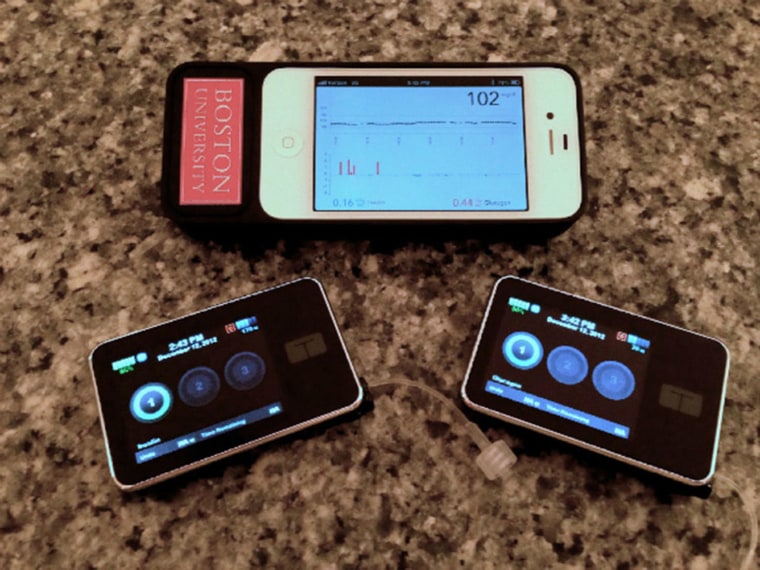An "artificial pancreas" system that uses a smartphone to help control a diabetic’s blood sugar monitoring and insulin delivery worked better than using devices separately, researchers reported Thursday.
The three-month study in both adults and kids showed the approach — really a coordinated system to continually test blood and deliver insulin to diabetics — worked safely for three months.
The 33 adults used the system day and night, and 25 children and teens in the study used it overnight. Their blood sugar stayed at lower, healthier levels than when the patients tried to manually manage their condition, the team reported in the New England Journal of Medicine and at the European Association for the Study of Diabetes Annual Meeting in Stockholm.
"Participants were allowed to travel and to use the system when driving.”
"We found that extended use of a closed-loop system at home over a period of 12 weeks during free daily living without close supervision is feasible in adults, children, and adolescents with type 1 diabetes," Dr. Hood Thabit of the University of Cambridge in Britain and colleagues wrote in their report.
"We did not restrict participants’ dietary intake or, after the initial 2 weeks, physical activity or geographical movements. Participants were allowed to travel and to use the system when driving."
The system is a little different from one that was tested on kids at a summer camp in the U.S. last year, but the results were similar, the team reported. Only one patient had an incident of dangerously low blood sugar, or hypoglycemia, and that was because of a dying battery in one device.
"Many people in the field have seen the potential of the artificial pancreas systems and thought that they could add significant value," Aaron Kowalski, vice president for research at JDRF, formerly the Juvenile Diabetes Research Foundation, which helped sponsor the study, told Reuters Health.
"But we worry about what's going to really happen when people go out in the real world where you have exercise, you might be golfing all day, eating huge meals, and drinking alcohol," he said.
About 5 percent of the 29 million Americans with diabetes have Type 1 diabetes.
Type 1 diabetes is an autoimmune disease, caused when the body mistakenly destroys pancreatic cells that produce hormones like insulin and glucagon that control blood sugar. High glucose levels damage tiny blood vessels, which in turn can lead to blindness, heart disease, stroke and kidney failure. People can lose toes, feet or legs to amputation.
"We worry about what's going to really happen when people go out in the real world where you have exercise, you might be golfing all day, eating huge meals, and drinking alcohol.”
When levels fall too low, patients can pass out and even die.
For the latest study, the team used a system designed at Cambridge University. It includes a wearble blood glucose monitor, a wearable insulin pump and a smartphone controller. Bluetooth technology let the devices communicate wirelessly.
Most people with type-1 diabetes must constantly check their blood sugar throughout the day, administering insulin according to what they are eating and how much they are exercising. It’s tedious and very hard to be precise.
Wearable devices allow more automatic and continuous monitoring and insulin dosing, but there’s no system on the market that coordinates the blood sugar monitor with the insulin delivery.

